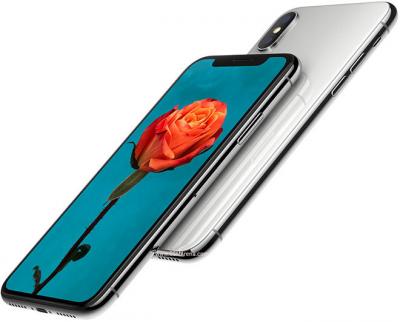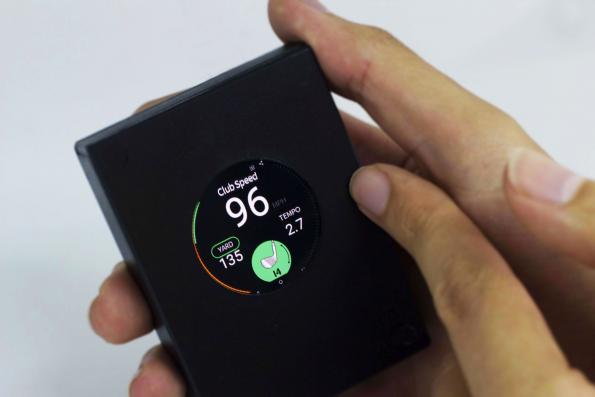Wearable OLEDs - Introduction and Latest Industry News - Page 11
The Fraunhofer FEP demonstrate AR/VR dataglasses based on its SVGA bi-directional OLED microdisplays
The Fraunhofer FEP institute has successfully integrated its bi-directional OLED microdisplays into an VR / AR HMD (or dataglasses, as the Fraunhofer calls it) for 2D and 3D content.

The new HMD demonstrator uses the Fraunhofer's SVGA (800x600) displays and connects via a USB interface and an HDMI connection. The bi-directional displays can be used for eye tracking to support novel user interfaces.
Innolux starts producing small flexible AMOLED displays
Taiwan-based Innolux has started to produce flexible AMOLED displays, starting with a round 1.39-inch 400x400 (287 PPI) panel. The new AMOLED is aimed towards wearable (smart-watch) applications and is now in mass production.
It is great to see another display producer entering the OLED market. This is also the first flexible AMOLED on the market besides those made by Samsung and LG Display. Innolux is willing to sell these panels to low-volume customers, contact us for more details. You can also view the full technical specifications of the new AMOLED here.
Apple announces the iPhone X with a 5.8" flexible Super AMOLED
Yesterday Apple announced its new iPhone lineup which includes the flagship iPhone X that, as expected, features a 5.8" 1125x2436 (458 PPI) flexible Super AMOLED display that covers almost the entire front of the phone. Apple's first OLED iPhone will ship in November starting at $999.

Some reports suggest that SDC is only able to supply a limited number of displays to Apple which will severely limit iPhone X shipments.
Truly sees large demand for PMOLED displays, to dramatically increase capacity by next year
OLED maker Truly Semiconductor, based in Hong Kong, sees a large increase in PMOLED demand in the near future, and the company is executing an ambitious PMOLED capacity expansion plan.

Truly is currently operating two production lines: the P1 and P2 lines, both 2.5-Gen and with a monthly capacity of 625K and 1.25M pcs (Truly counts its capacity as per 1" displays). Truly has set out to build two new production lines. The P3 line which is a 2.5-Gen line with a capacity of 3.13 million 1 panels monthly is almost ready and will start mass production by the end of the month.
Truly to construct a 6-Gen flexible AMOLED fab in Meishan, China
Truly Semiconductors signed an agreement with the Meishan City government (in Sichuan, China) to establish a joint-venture to construct a 6-Gen AMOLED line. The fab will be mostly used to produce small-sized AMOLED smartphone displays. In addition to the AMOLED line, Truly's new plant will also host a new 5-Gen TFT LCD production line.

Truly estimates that the project will cost a total of 40.4 billion Yuan (almost $6 billion USD). Construction of the AMOLED fab will begin in October 2018, and production is expected to begin in 2021. The cost of the AMOLED fab (which is the second stage in this project, the LCD line will come first) will total $4.1 billion USD. The AMOLED line will use 6-Gen substrates (1500x1850 mm) and will have a monthly capacity of 30,000 substrates (equivalent to over 52 million 5" panels annually).
DSCC: OLED revenues to reach $21 billion in 2017, will rise to $46 billion in 2021
DSCC expects the OLED market to rapidly grow in the near future, as AMOLED production capacity will increase at a CAGR of 41% from 2016 (5.3 million square meters) to 2021 (29.4 million square meters). OLED revenues will reach $21 billion in 2017 (a rise of 46% compared to 2016) and will reach $46 billion in 2021.

Smartphones are still the largest OLED application by far - with a 86% market share (revenues) in 2017 and 81% in 2021. The second largest application by revenues are OLED TVs, and other applications follow with a small market share - but one that will increase as supply looses in the future. If we look at shipments, then smartphones acount for 94% of OLED shipments, and the 2nd and 3rd applications are VR headsets and smart watches. OLED TV shipments will reach 6.5 million in 2021 (rising at a CAGR of 49% from 2016 to 2021).
UBI sees fast growth ahead for VR and AR OLED displays
UBI Research estimates that the AR and VR market will grow to 96.4 million units and $58.7 billion in device sales by 2021. In 2017, 17 million units will ship generating $3.9 billion in revenues. From 2017 to 2021 the market will grow with a CARG of 54%.

According to UBI, the VR and AR market was split almost 50% between OLED and other technology displays, with 2.6 million OLEDs shipped in 2017. Most next generation VR headsets will use OLED displays, however, and by 2021 OLEDs will occupy 80% of the market.
Lenovo says its foldable wrist device could ship within 2-3 years
In December 2016 Lenovo demonstrated two foldable device prototypes. One of these devices is the CPlus, a smartphone that can be turned into a smartwatch. A few days ago Lenovo demonstrated the CPlus again, saying that such devices could be on the market within 2-3 years.

The CPlus device demonstrated now is similar to the the original one shown in 2016 - but the display size has been slightly increased (to 4.35" from 4.26"). CPlus runs on a customized Android version, includes an embedded SIM card and has a camera that can be motion triggered so it can be used in the wearable mode.
IHS sees AMOLED shipments surging in 2017, fast growth throughout 2020
IHS says that AMOLED panel shipment will increase 63% in 2017, driven by strong demand from smartphone makers. Looking forward the AMOLED market will experience fast growth, as demand will rise for smartphones, TVs, VR HMDs and mobile PCs.

In 2017 the AMOLED market will reach $25.2 billion in revenues, up from about $15 billion in 2016. The OLED TV market will grow to 1.5 million units (up from from 890,000 units in 2016). Mobile display resolution continue to increase, and in 2017 68% of shipments will be of FHD, QHD and WQHD resolutions.
Will Samsung's next-gen Gear VR headset include its own 2000 PPI OLED display?
According to a report from Korea, Samsung is developing its next-generation Gear VR headset, which will include a built-in display (unlike current models which require you to insert your Galaxy smartphone into the device).

The report claims that Samsung will adopt a new OLED display in this device - which will achieve a pixel density of 2,000 PPI. Such a high pixel density will be great for VR as it will improve the realism and reduce sickness.
Pagination
- Previous page
- Page 11
- Next page

